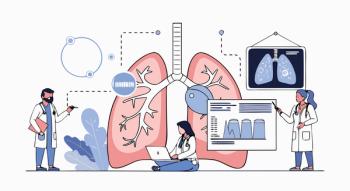
- MHE June 2021
- Volume 31
- Issue 6
Rising STD Trend, Interrupted
The pandemic caused a temporary dip in 2020. But as public health spending has decreased, sexually transmitted disease trends have increased.
For years, sexually transmitted disease (STD) rates in the United States were rising, despite all the advice and messaging about safe sex practices. By many measures, 2019 was the worst year on record.
Then COVID-19 hit and the trend reversed. The giant pause on traditional social life apparently extended to sexual activity and its attendant disease risks.
The downturn “probably reflected not only a lack of sexual activity in the community but also a lack of access to STD testing,” notes Gabriel Wagner, M.D., an infectious disease specialist and clinical associate professor at University of California, San Diego. Chlamydia cases reported to the CDC in early April 2020 were 53% below 2019 levels, gonorrhea cases were 33% lower, and syphilis cases, 33% lower, said Hillard Weinstock, M.D., M.P.H., chief of the surveillance and data management branch in the CDC’s Division of STD Prevention during the agency’s STD Prevention Conference in September 2020. He noted that the data were as of August 2020 and could change slightly.
Related:
The reversal, though, was likely a COVID-19 aberration. Toward the end of last year, STD rates began to climb again. “As more pandemic restrictions are lifted, it is probable that STD rates will rise and surpass those of prior years, consistent with historic trends,” says Wagner.
Reported cases of syphilis returned to 2019 levels by mid-June 2020. Similarly, reported cases of gonorrhea returned to 2019 levels in mid-June 2020. However, cases of chlamydia, as of late June 2020, had not yet returned to their 2019 levels, according to CDC statistics. According to the CDC, most people who have chlamydia don’t have symptoms; therefore, detection may be more dependent on screening.
Shifting to COVID-19
Tracking and treating STDs have long been the responsibility of public health departments. Before the pandemic, reductions in funding for STD screening and treatment programs throughout the country had likely contributed to the risking of STDs. Since the the start of the pandemic, many of the remaining staff members for STD programs have been shifted to the COVID-19 response, diminishing the numbers even further. According to one survey, as of January 2021, about one-third of state and local STD program staff were still working on COVID-19 response efforts. Staff also reported burnout as they pivoted from COVID-19 back to STD interventon and partner work. A recent report on sexually transmitted infections (STIs) by the National Academy of Sciences, Engineering, and Medicine concluded that the “pandemic has exposed weaknesses in public health preparedness due to weak infrastructure, an under-capacitated and under-resourced workforce, and limited surge capacity.”
Similar interruption occurred in services for HIV prevention. The same clinics and staff previously providing testing for STIs and treatment also offered preexposure prophylaxis (PrEP), a pill containing antiviral medications that people at risk for contracting HIV take to prevent infections.
“PrEP services fared far better than other STI prevention efforts,” says Michelle Collins-Ogle, M.D., FAAP, a pediatric infectious disease specialist at The Children’s Hospital at Montefiore in the Bronx, New York. But PrEP services and uptake have not escaped the effects of the pandemic, and researchers have documented a drop off that parallels declines in sexual activity and the number of partners that men who have sex with men have.
HPV decline
One major exception to the pre-pandemic uptick in STDs has been a sharp decline in the number of infections with the human papillomavirus (HPV) because of the introduction of the Gardasil vaccine in 2006. Findings reported in Morbidity and Mortality Weekly Report (MMWR) in March showed a drop in the prevalence of infections with the four types of HPV the original Gardasil vaccine protected against since the vaccine was introduced. The decrease was 88% among women ages 14 to 19 and 81% among women ages 20 to 24.
Compared with the pre-vaccine era, from 2015 to 2018 HPV infections decreased among sexually experienced girls and women who were vaccinated (97% among 14- to 19-year-olds; 86% among 20- to 24-year-olds), as well as those who were not vaccinated (87% among 14- to 19-year-olds; 65% among 20- to 24-year-olds), according to the data reported in MMWR.
The Gardasil vaccine was later modified to protect against five more types of HPV. The FDA approved that version of the vaccine, called Gardasil 9, in 2014.
HPV infections cause most cervical cancer cases, and research shows that the vaccine and the reduced number of infections have led to a decrease in cervical cancer cases. CDC researchers reported in Cancer Epidemiology, Biomarkers & Prevention last year that the rates of the most common type of cervical cancer (the type that affects the squamous cells) decreased 12.7% per year from 1999 to 2017 among women ages 15 to 20, 5.5% among women ages 21 to 24, and 2.3% among women ages 25 to 29.
Researchers have grappled with how to calculate cost burden from STDs, partly because doing so puts prevention budgets in perspective. In the April 2021 issue of the journal Sexually Transmitted Diseases, researchers estimated that 27 million STIs were transmitted in 2018 and that those resulted in lifetime direct healthcare costs for those infected of about $16 billion.
HIV cases account for most of those costs ($13.7 billion), with HPV a distant second at about $800 million. The costs associated with HIV are high because an infection may mean a lifetime of treatment. HPV infections are expensive because of the cost of treating HPV-related cancers, which include cervical, anal, penile and oropharynx cancers.
Weinstock says the pandemic has highlighted the need to figure out how to deliver high-quality STD services in new ways. The CDC has identified several possibilities:
- STD express clinics that would provide walk-in testing and treatment without a full clinical examination.
- Partnerships with pharmacies and retail health clinics that can provide new access points for on-site testing and treatment.
- Telehealth that can close gaps in testing and treatment, ensure access to healthcare providers and support self-testing or patient-collected specimens.
Weinstock notes that many of these services are part of the strategies highlighted in the recently released HHS Sexually Transmitted Infections National Strategic Plan, which provides a road map for how to control infections over the next five years.
Karen Appold is a medical writer in the Lehigh Valley region of Pennsylvania.
Articles in this issue
over 4 years ago
Amazon vs. Traditional Healthcare: Who Will Win?over 4 years ago
Birth Control is Also Part of Sexual Healthover 4 years ago
At-home Dialysis on The Riseover 4 years ago
Results from 2021 Managed Healthcare Executive® Pharmacy Surveyover 4 years ago
Psychedelics Take a Long, Strange Trip to RespectabilityNewsletter
Get the latest industry news, event updates, and more from Managed healthcare Executive.



















































